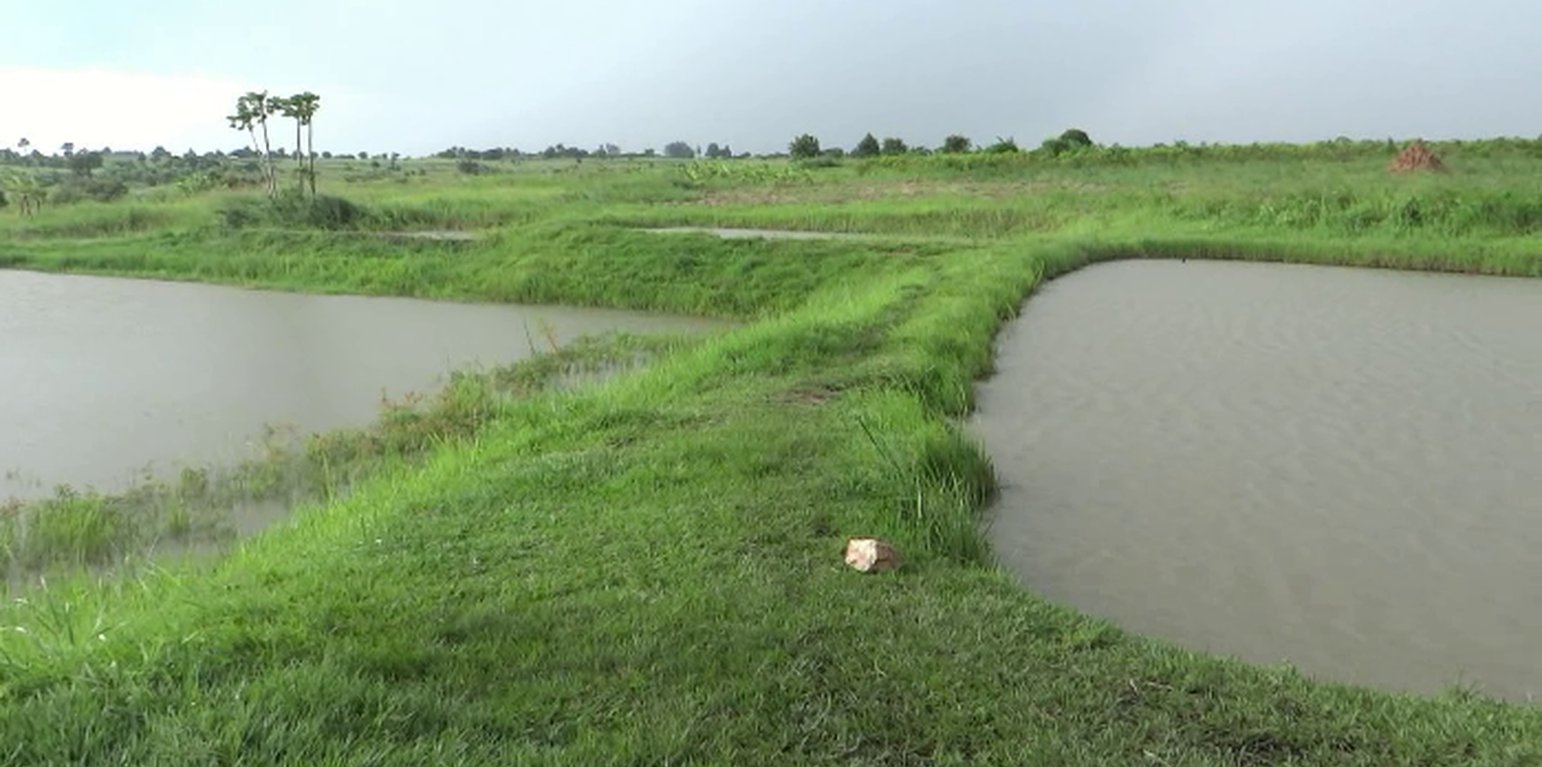



Fish farming is a sustainable land management agricultural practice promoted by farmers on medium sized farms in Northern Uganda, where ground water supply in wetland is used to recharge at least three adjacent fish ponds for fish production during the wet and dry season with each pond established measuring 50 m long x 20 m wide and 1.5 m depth with the following inputs hoes, spades, panga, wheel barrow, feeds and labour. The sides of the ponds are grown with grassy vegetation to stabilize soil, as well as feed the fish. It is, therefore imperative that farmers who want to invest in such sustainable land management practice first seek professional advice from extension agents or from other experienced farmers, on post-harvest fish handling and preservation. In Northern Uganda, fish theft and poisoning are also rampant, especially where ponds are not properly guarded or fenced. The most costly aspects of pond fish farming include pond excavation, laboratory testing of water and surrounding soil properties; procurement of fries especially tilapia, fencing and procurement of fish feeds. The average cost of establishing each pond is approximately US$428; while putting fish firies establishment goes for an average of US$ 71 per pond.
It is important to note that at the beginning the capital investments are high; these include paying for construction and buying fish fries to put in the ponds. However, in the long term the benefits exceed the costs. This is because fish farming is a high value enterprise with potential to provide household food, nutrition and income security.
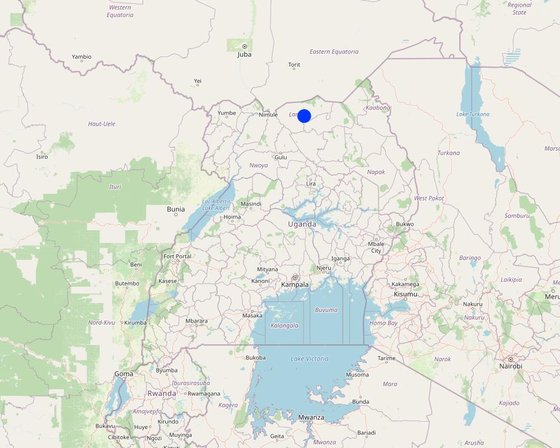
Lugar: Lamwo District, Northern Region,Uganda, Uganda
No. de sitios de Tecnología analizados: un solo sitio
Difusión de la Tecnología: aplicada en puntos específicos/ concentrada en un área pequeña
¿En un área de protección permanente?:
Fecha de la implementación: 2000; 10-50 años atrás
Tipo de introducción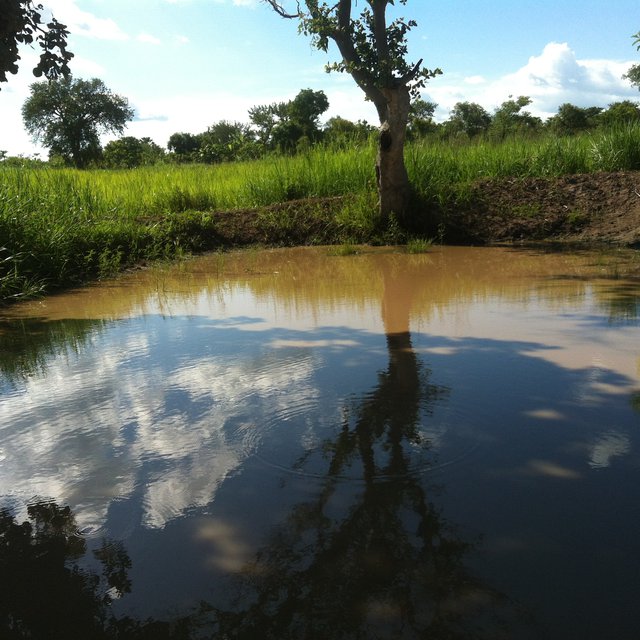


| Especies | Conteo |
| cabras | 5 |
| ganado - carne de res no lechera | 4 |
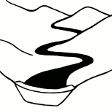







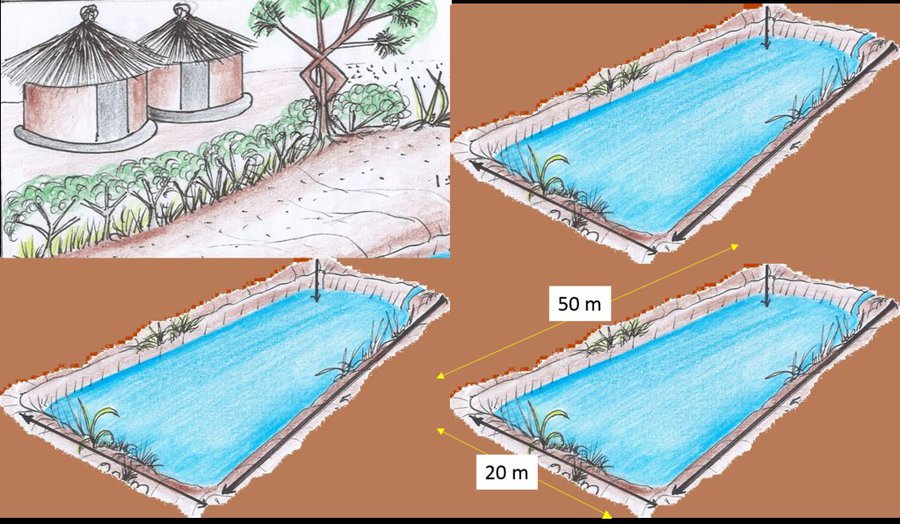
| Especifique insumo | Unidad | Cantidad | Costos por unidad (UGX) | Costos totales por insumo (UGX) | % de los costos cubiertos por los usuarios de las tierras |
| Mano de obra | |||||
| Monthly persons days | persons | 6,0 | 150000,0 | 900000,0 | 100,0 |
| Equipo | |||||
| Hoes | pieces | 6,0 | 10000,0 | 60000,0 | 100,0 |
| Spade | peices | 3,0 | 10000,0 | 30000,0 | 100,0 |
| panga | pieces | 3,0 | 10000,0 | 30000,0 | 100,0 |
| Wheel barrow | piece | 2,0 | 250000,0 | 500000,0 | |
| Otros | |||||
| Fish fries for 3 ponds | fries | 3000,0 | 1000,0 | 3000000,0 | 100,0 |
| Soil tests | 1 | 2,0 | 350000,0 | 700000,0 | 100,0 |
| water tests | 1 | 2,0 | 380000,0 | 760000,0 | 100,0 |
| Costos totales para establecer la Tecnología | 5'980'000.0 | ||||
| Costos totales para establecer la Tecnología en USD | 1'708.57 | ||||
| Especifique insumo | Unidad | Cantidad | Costos por unidad (UGX) | Costos totales por insumo (UGX) | % de los costos cubiertos por los usuarios de las tierras |
| Mano de obra | |||||
| Persons days for feeding and slashing/ monthly | Persons | 1,0 | 150000,0 | 150000,0 | 100,0 |
| Otros | |||||
| Feeds monthly | Kilograms | 15,0 | 4000,0 | 60000,0 | |
| Indique los costos totales para mantenecer la Tecnología | 210'000.0 | ||||
| Costos totales para mantener la Tecnología en USD | 60.0 | ||||
Well managed with constant feeding.
Promoting different fish fries on the fish ponds.
Cantidad antes de MST: 0
Cantidad luego de MST: 3
Started with one fish pond and increased to three adjacent fish ponds.
Vegetation planted/ allowed to grow around the ponds to act as fodder and stabilizer
for fish production.
Purchase of feeds.
High due to sale of fish.
Sale of fish.
Between those who have fish ponds and those who don't have.
Increased workload at establishment for digging ponds, feeding the fish fries compared to maintenance.
Relies on fish from the pond.
Other farmers coming to learn from the technology.
Training by the extension worker on feeding and management.
Water re-charged from underground.
Underground harvesting and kept in the pond for fish production during the dry season.
Vegetation allowed to grow on the ponds as stabilizer and feeds.
More fish fries varieties stocked by the farmer in the ponds :3 different species.
Training by the extension agent on how to control.
under ground water harvesting water to be favour fish survival during the dry season.
located in the wetland.
re-charged from under ground,